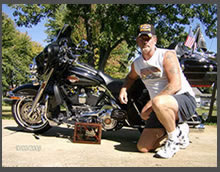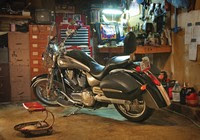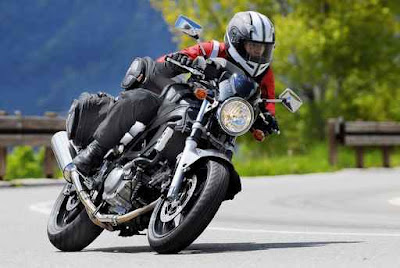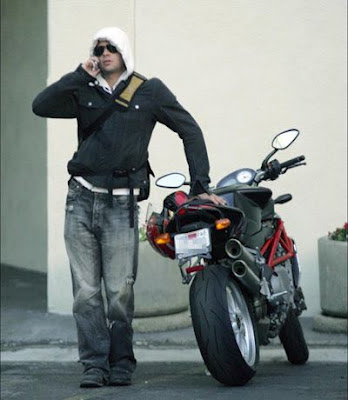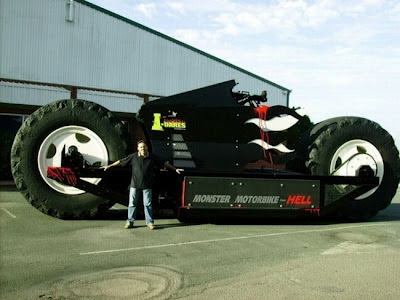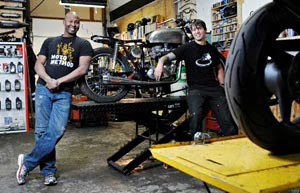There's nothing like riding a motorcycle on the open road. For most of the world, the motorcycle or 2-wheel scooter is the most common form of motorized transportation available. Around 200 million motorcycles are in use worldwide (compared to almost 600 million cars) and almost 60% of these are in Asia and the Far East - China and India both have over 35 million motorcycles and motorized scooters in use. Contrast this to the United States where the car is dominant (about 30% of the world's cars are here in the United States). In fact, the world's largest producer of two-wheel vehicles isn't Harley Davidson or Suzuki, it's Hero Motocorp, based in India. Kind of small indication of how the world is changing, isn't it?
While we're not experts on the place of motorcycles in the culture of these other countries, it's obvious that here in the USA, the motorcycle has a unique niche in our pop culture consciousness. This place was cemented in the 1960s with movies like Easy Rider and Hunter S. Thompson's book on the Hells Angels motorcycle gang in the mid-1960s. Harley Davidson's sales are bolstered by their unique marketing appeal to how motorcycles look and feel on the open road. Harley even patented the exact sound of their engine. Beyond Harley Davidson, motorcycle sales in the United States today are around 1 million units a year. So lots of people these days are hitting the open road and feeling the wind in their face.
While motorcycles and scooters are fuel-efficient and a lot of fun to ride, they aren't necessarily cheap. High-end motorcycles like a Harley can easily rival what it costs for a new car. That's a lot of money invested in two wheels. So if you have a motorcycle or scooter, it's important to take care of your investment so it will keep you riding for years to come.
This article covers advice and tips from professionals to guide you in the steps you need to follow to take care of your bike and keep it working its best for as long as possible. We will talk about areas of the bike that you need to pay regular attention to and why. We'll talk about the right fuels to use and how to store your bike.
YOUR OWNER'S MANUAL - THE ESSENTIAL GUIDE TO SUCCESS
Following the owner's manual is, quite frankly, pretty underrated when it comes to ensuring a long and successful ownership experience of your motorcycle (and your car, too). But they write owner's manuals for a reason. The manual will give you the best advice from the manufacturer on important issues like
What you need to get fixed, how often, and when you should schedule the service
The type of oil and essential fluids needed by your bike
Any special procedures you can undertake yourself to keep your bike running its best
For those of us who are heavy into DIY and more mechanically-inclined, there are "full service" manuals available that basically tells a mechanic everything they need to know to rebuild the entire bike from scratch, down to such esoteric information as how many pounds of force to tighten a bolt on the bike.
Whether you're one of those gearheads or just an average biker who wants to keep your bike in its best shape, you need a copy of your owner's manual and you should check it often. The investment will be worth it.
PROPER MAINTENANCE SCHEDULES
Manufacturers recommend that motorcycles be serviced at specific mileage or time intervals. The suggested maintenance intervals are listed in the owner's manual to help owners and technicians set up a realistic and appropriate maintenance schedule. Most motorcycles made after 1980 are pretty reliable if maintained properly. To some extent, the high reliability of today's motorcycles has worked to the disadvantage of many riders. Some riders have been lulled into believing that motorcycles are like modern cars and require little maintenance. Modern bikes require less maintenance than they did in the 60's and 70's but they still need a lot more maintenance than a car.
BREAKING YOUR MOTORCYCLE IN FROM NEW
When you lay out the money to buy a new cycle, you certainly want it to start its life out right. This means you have to "break it in" correctly. This will prevent problems with your bike later on. Exactly what you need to do in this respect depends on the manufacturer recommendations for your bike, which will be found in your manual. It could be as light as just being advised to do "light riding" for the first hundred miles of life, to more complex and involved break-in protocols that involve driving the bike at specific speeds and engine RPMs for specific amounts of time, and which may change and morph from doing one thing during the first few hundred miles to doing something else for the next thousand.


